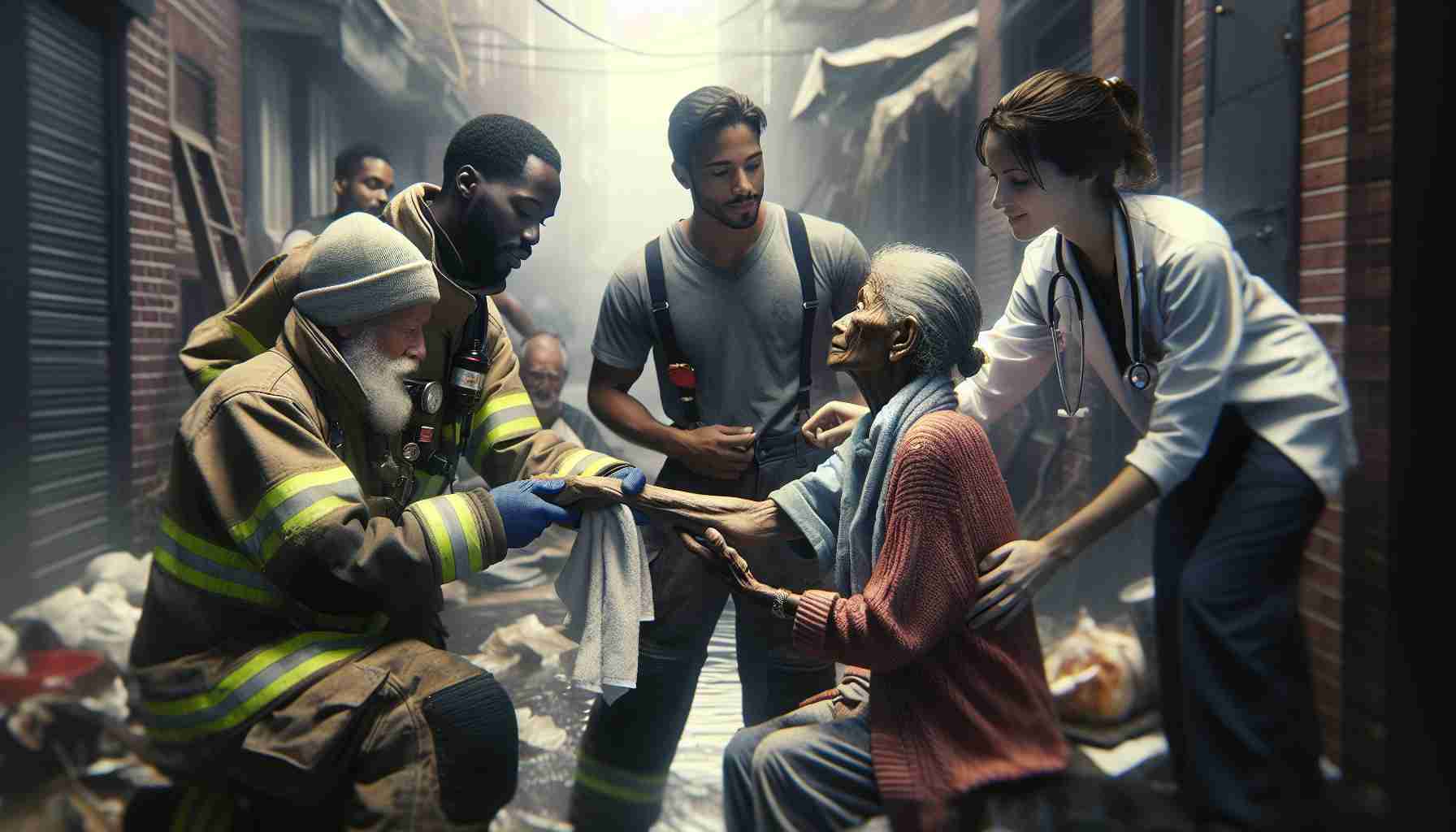Amidst the vibrant atmosphere of Annapolis, Maryland, the Dapper Dog Tattoo Shop has emerged as a symbol of pride and resilience. Situated just a few blocks from the historic State House and the Naval Academy, the shop is characterized by an eye-catching display—a rainbow flag that conveys a powerful message of acceptance. This emblem of inclusivity was first raised by owner Charlie Garrett in 2021, shortly after he established his business.
Unfortunately, the flag has faced repeated acts of vandalism, with its most recent removal creating a significant outcry among local residents. The shop’s flag was notably torn down multiple times, leading Garrett to install a security camera for protection. In a shocking turn of events, footage captured an apparent hate crime perpetrated by a local Navy Academy graduate, who was later charged for his actions.
The incident not only highlighted issues of intolerance but also strengthened community support. Following the crime, the Dapper Dog’s visibility and clientele surged, as local leaders and law enforcement rallied around the cause. Garrett noted that consultation requests spiked significantly, showcasing how adversity can sometimes galvanize collective action.
As the LGBTQ+ community continues to navigate challenges in this tumultuous climate, platforms for unity and healing become essential. In the face of hate, the Dapper Dog Tattoo Shop stands as a beacon of hope, illustrating the power of community commitment to inclusivity and support.
Life Hacks and Tips for Building Community Resilience
In light of the inspiring story of the Dapper Dog Tattoo Shop in Annapolis, Maryland, it’s essential to explore ways individuals and communities can foster resilience, inclusivity, and support. Here are some valuable tips, life hacks, and interesting facts about community building that can help transform adversity into strength.
1. Organize Community Events
Hosting events, whether virtual or in-person, can significantly strengthen community ties. From local fairs to art exhibitions showcasing local talent, these events foster connections and promote understanding. Engage diverse groups to ensure representations are inclusive, creating a tapestry of voices and experiences.
2. Advocate for Inclusive Spaces
Just like the Dapper Dog Tattoo Shop acts as a safe haven, it’s crucial to create inclusive environments in various settings. Work with local organizations to ensure that public spaces, businesses, and schools are welcoming to everyone, regardless of their background or identity.
3. Leverage Social Media for Good
Utilize platforms like Facebook, Instagram, or Twitter to spread positivity and support. Create groups or pages that focus on community support, share upcoming events, and amplify voices that may otherwise go unheard. This can help establish a strong online community that mirrors the physical one.
4. Encourage Neighbors to Connect
Start a neighborhood initiative where residents can share skills, resources, and services. Whether hosting skill-sharing days, potlucks, or community workshops, these gatherings will enhance relationships among neighbors and help build trust.
5. Learn from Regional Leaders
Observing local leaders—like Charlie Garrett from the Dapper Dog—can provide insights into effective community engagement. Attend town hall meetings, join local advocacy groups, or volunteer with organizations focused on inclusivity and support. Your engagement can inspire others.
6. Support Local Businesses
Show your support for local businesses, especially those promoting inclusivity. A community that rallies behind its local vendors not only strengthens the economy but also cultivates a culture of support. Share your experiences on social media to amplify their reach.
7. Practice Active Listening
To foster true inclusivity, it’s vital to listen actively to community members’ needs and concerns. Create forums or suggestion boxes where individuals can express their thoughts anonymously. This approach helps identify issues and potential solutions while making everyone feel valued.
8. Establish Safety Networks
Just as Garrett installed security for protection, creating safety networks can empower community members. Develop systems where individuals can look out for one another, whether through neighborhood watch programs or support circles that check in on members regularly.
Interesting Fact: Did you know that community cohesion directly correlates with improved mental health among its members? Studies have shown that individuals who feel connected to their community experience lower rates of anxiety and depression.
For more insights on building a resilient and inclusive community, visit We Are The People. Together, we can create spaces where everyone belongs and thrives.

